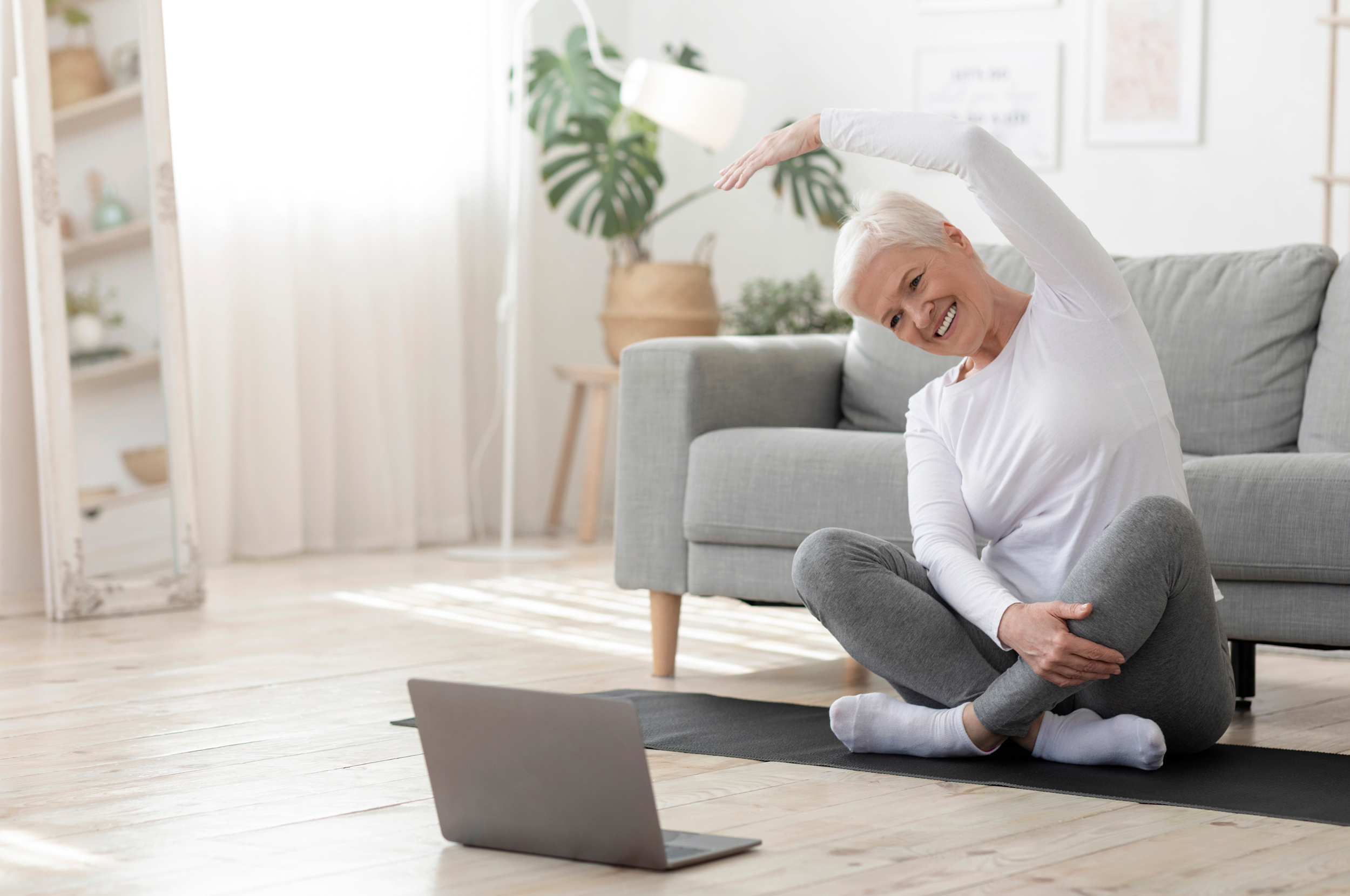How do you perceive physical activity? For many, physical activity is limited to participating in an organized sport or following an exercise program in a gym. This perception poses some problems when we want to encourage our slightly older customers to be active. As soon as the term physical activity is mentioned, they imagine that they have to go running again, something which obviously seems impossible to them most of the time. Like all human beings, when faced with the impossible, many of our elders become discouraged and lose the taste and interest in doing any activity that would cause them to move their body since they do not see the benefits. And yet there are several benefits, the most important of which is the preservation of your independence!
In this article, we’ll explore how staying active helps you maintain your independence, even after an operation, injury, or fall.
First of all, we would like to reassure you. Physical activity comes down to one thing: Getting active.
Simple isn’t it? So, in other words, if you:
- Go for a walk,
- Sweep,
- Do some gardening,
- Play with your grandchildren,
- Dust your furniture,
You are, in fact, participating in physical activity. Of course, certain criteria should be met in order for this physical activity to be considered effective for your health and well-being, but we will come back to this shortly.
As you can see, you don’t need to sign up for a training program to be physically active. That being said, you might be wondering why you should get moving.
Here are a few reasons:
1. Maintain your functional autonomy
The important thing here is that you lose what you don’t use. Your muscles are made to move. When you stop moving them, your muscles atrophy and you lose strength and mobility in your movements. The result? Maybe you have difficulty lifting a box above your head to place it on the shelf, or maybe it becomes more and more difficult for you to stand for long periods of time? Staying active allows you to continue participating in the tasks of daily living as well as continuing to participate in your social activities.
2. Take care of your heart and lungs
Getting active activates your heart and respiratory systems. When you are active, your heart pumps your blood faster, which allows your muscles to oxygenate more often. Oxygenated muscles are muscles that stay healthy and therefore respond better when asked to exert themselves.
3. Protect your bones and joints
When you take care of your muscles, you also make sure you take care of your bones and joints. Strengthened muscles protect them in the event of a fall or greater physical exertion. In addition, regular movement lubricates your joints and decreases pain, which is also caused by osteoarthritis, the normal aging of bones.
4. Take care of your brain
The increased circulation of blood, and therefore oxygen, that occurs during physical activity is not limited to muscles! As you might have guessed, it also provides good oxygenation to the brain which keeps it healthy and helps prevent or slow the development of dementia.
As mentioned earlier, there are some recommendations for physical activity that will help you get the most benefit from it.
Ideally you should follow the following guidelines:
- Perform a minimum of 150 minutes of moderate physical activity ** per week;
- Each physical activity session should last a minimum of 10 minutes.
** Moderate exertion is defined as exertion during which you feel hot and feel a little short of breath.
Move to accelerate
Do the above benefits and the recommendations we make to you seem reasonable? So much the better! We hope they have motivated you to bring more movement into your life. However, what about physical activity following an operation, injury or fall? The natural tendency is to stay in bed and get as much rest as possible. However, regaining your physical ability depends on how quickly you get back to using your muscles. In fact, the older we get, the longer the recovery takes and the more essential it becomes to quickly, albeit gradually, resume our daily activities and our healthy habits.
Why do you think people are slow to start moving again? Do you think it is from laziness or a lack of motivation? In our experience these are not the determining factors.
When you walk, do you think about the step you need to take? What about going up the stairs, getting in and out of the car? Do these movements come naturally to you? We believe that people are slow to start moving again because they believe they can easily resume their daily activities.
The reason? Because they’ve been doing them without thinking for several years. In contrast, most of them do not know the time or effort required to rehabilitate these activities. We therefore hope that by sharing this information with you, you will be better prepared if such a situation arises.
There are gradual and safe ways to reintroduce movement after a period of physical inactivity. We strongly encourage you to call on a physiotherapy professional to assist you in this process.






